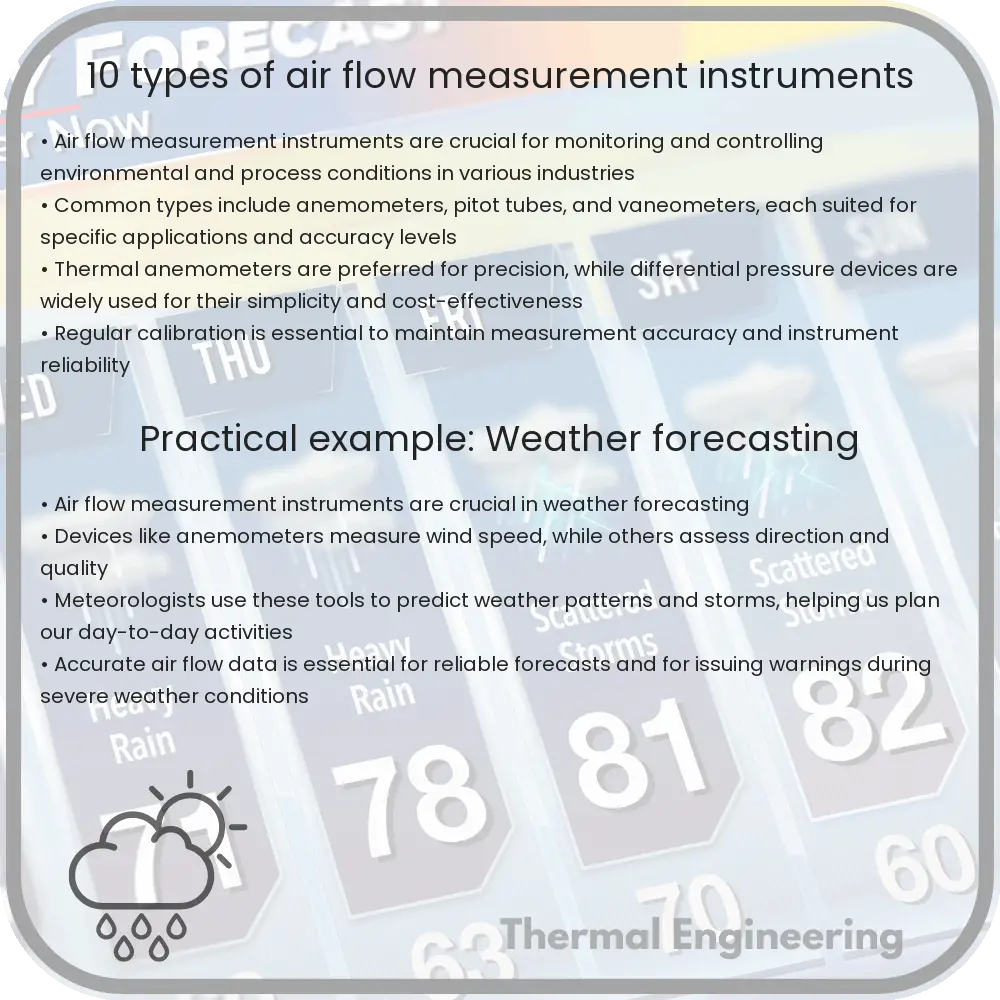Learn about the key types of air flow measurement instruments used in engineering and meteorology.

10 Types of Air Flow Measurement Instruments
The measurement of air flow is essential in various applications ranging from HVAC systems in buildings to industrial processes. The accurate measurement of air flow can ensure efficiency, safety, and compliance with environmental regulations. Here are ten common types of air flow measurement instruments used in different engineering fields:
1. Pitot Tube
A Pitot tube measures the velocity of the airflow at a point in a fluid. It works on the principle of differential pressure. The device measures the difference between the static pressure and the dynamic pressure of the fluid flow. This can be converted into flow velocity if the fluid’s density is known.
2. Hot Wire Anemometers
Hot wire anemometers use a thin wire heated up to a constant temperature. The flow of air cools the wire, and the amount of electrical current required to maintain the wire’s temperature is proportional to the air velocity. They are useful for small-scale and precise measurements.
3. Vane Anemometers
Also known as wind meters, vane anemometers have a rotating vane that measures air velocity. The speed of the vane rotation correlates to the air flow speed. They are commonly used for HVAC inspections and environmental assessments.
4. Cup Anemometers
Primarily used to measure wind speed, cup anemometers have cups that capture the wind, spinning a rotor proportionally to the wind speed. These are fundamental instruments in meteorological studies.
5. Thermal Mass Flow Meters
Thermal mass flow meters calculate air flow based on the heat absorbed by the air flow from a heated element. They are highly accurate and are commonly used in industrial applications where precise gas measurements are necessary.
6. Differential Pressure Flow Meters
Differential pressure flow meters measure the pressure differential across a constriction in the pipe, which correlates to the rate of flow. Devices such as venturi tubes, flow nozzles, and orifices are often used to create the constriction.
7. Turbine Flow Meters
In turbine flow meters, the air flow causes a turbine to rotate. The rotational speed of the turbine is proportional to the velocity of the air flow. It’s widely used in both water and air flow measurements.
8. Laminar Flow Elements
Laminar flow elements measure air flow by forcing the air through a laminar flow regime. The pressure drop across the element is measured and used to calculate the air flow rate based on the known characteristics of the element.
9. Sonic Anemometers
Sonic anemometers measure the speed of sound in the environment to determine air velocity. These are highly accurate and can measure wind speed in multiple directions. They are frequently used in weather stations and research applications dealing with turbulent airflow.
10. Orifice Plates
Orifice plates are used within pipes and work by creating a pressure drop across an orifice. This drop is measured and used to infer the flow rate using Bernoulli’s principles. Often used in combination with diaphragm or rotary meters, they are effective in large-scale industrial applications.
Each of these instruments has its specific domain of application, influenced by cost, required accuracy, environmental conditions, and ease of installation. Understanding the working principle and appropriate context for the use of these tools is crucial for attaining reliable measurements and optimizing performance in any flow measurement setup.